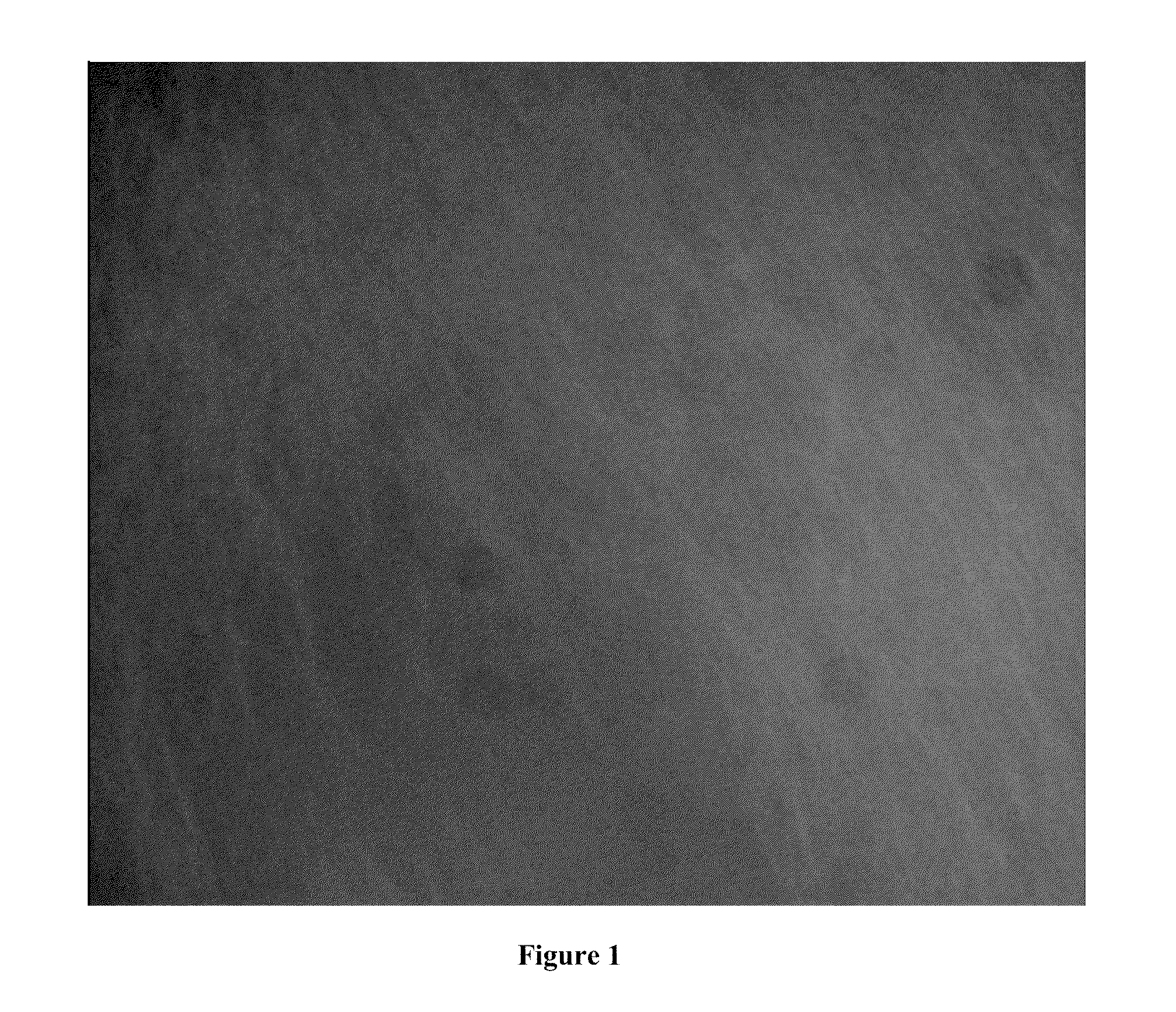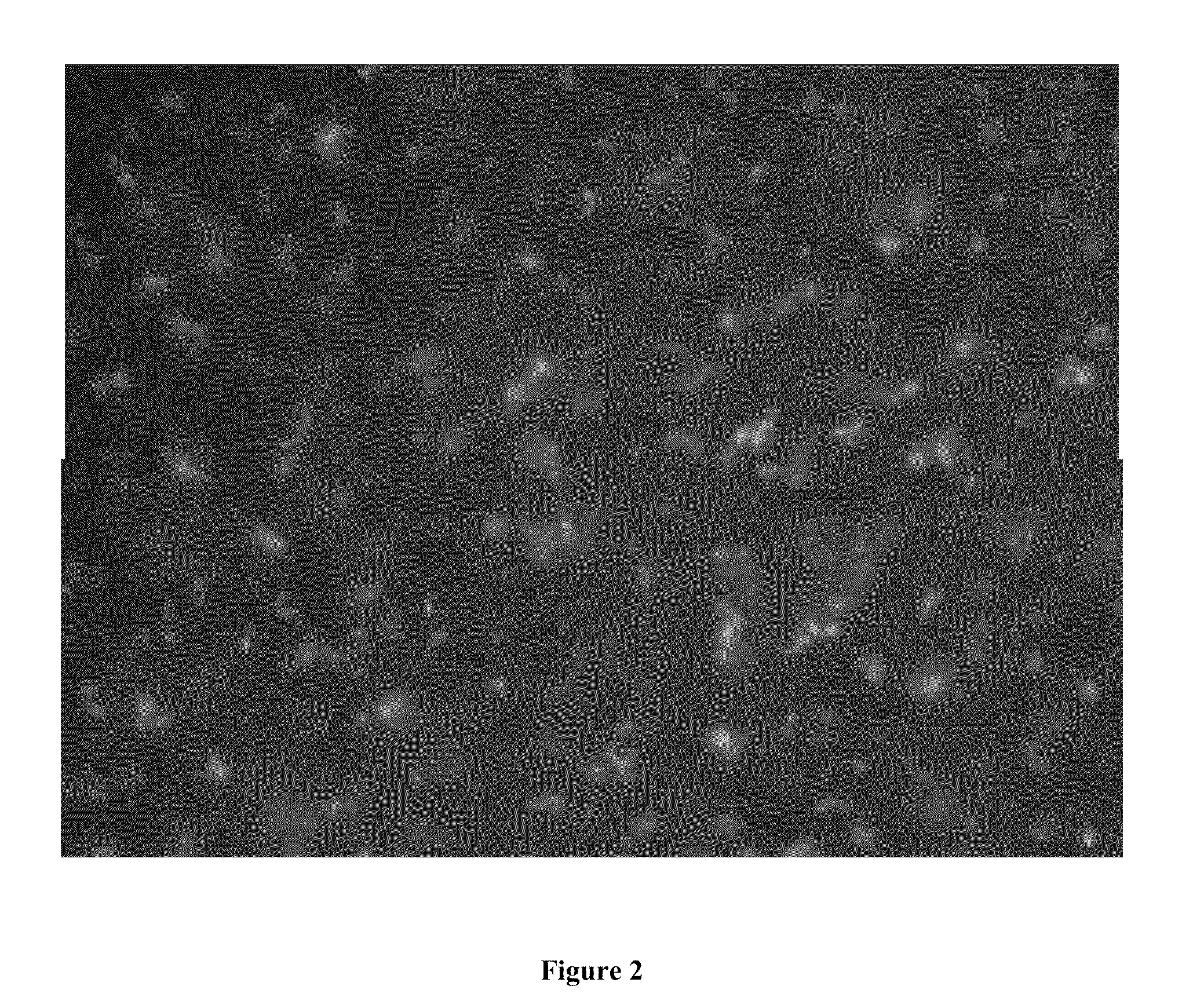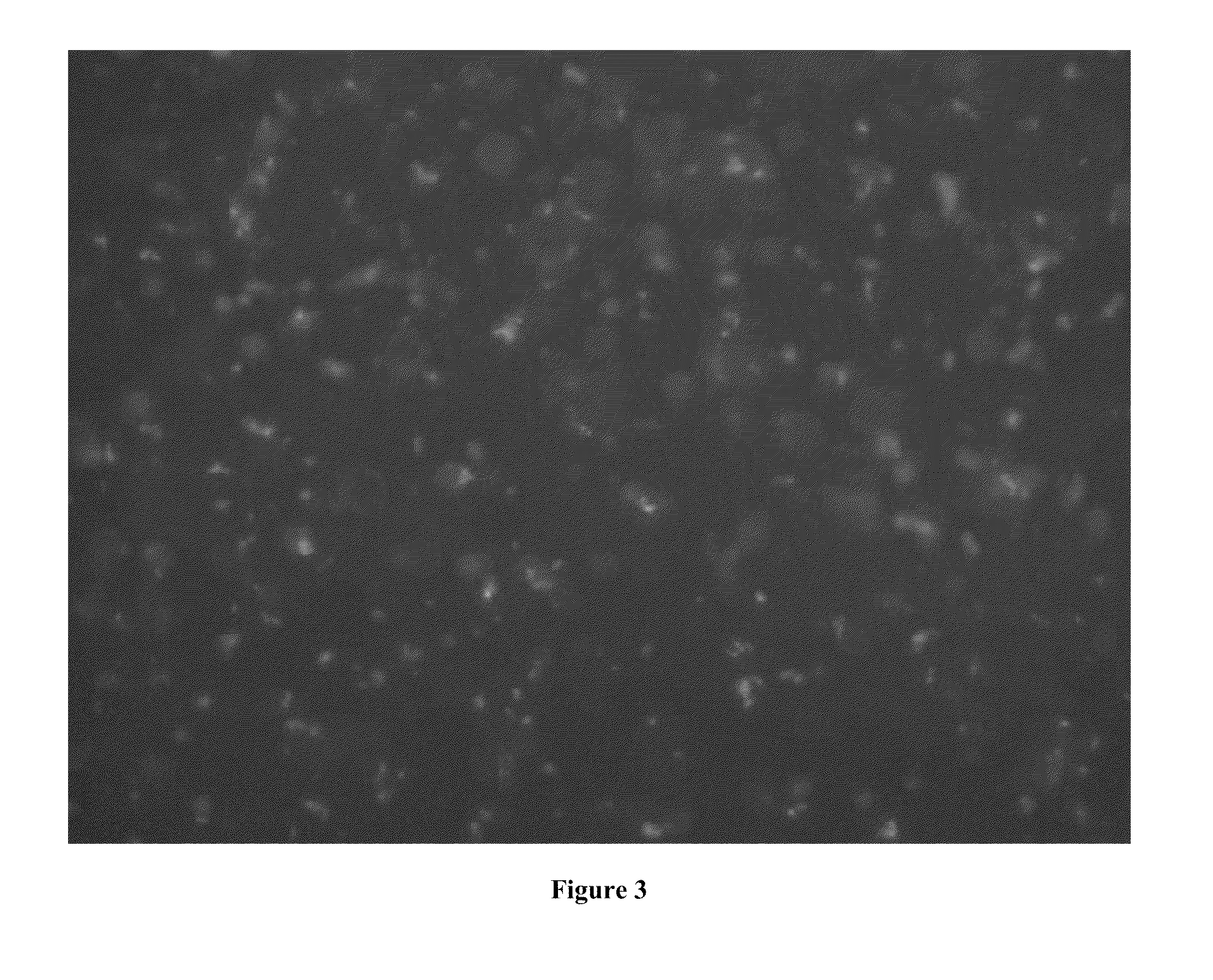Nanoparticle Based Therapy for Dispersing Mucin
a technology of mucin and nanoparticles, applied in the direction of drug compositions, natural mineral layered products, aerosol delivery, etc., can solve the problems of chronic influx of inflammatory cells whose proteases degrade gas exchange tissue, overwhelm the ability of the cilia to function properly, and inability to heal, so as to prevent the formation of mucin gel, reduce the availability of positively charged ions, and reduce the effect of inflammatory cell influx
- Summary
- Abstract
- Description
- Claims
- Application Information
AI Technical Summary
Benefits of technology
Problems solved by technology
Method used
Image
Examples
example 1
Effect of Nanoparticles on Mucin
[0114]Negatively charged polystyrene nanoparticles (120 nm) were used to disperse mucin gels. Mucin was first gelated to approximately 8 μm by crosslinking with 8 mM of Ca2+ in Hanks' solution for 48 hours (hrs). Dynamic laser scattering was used to measure the size of mucin aggregates after crosslinking with Ca2+. Negatively charged polystyrene nanoparticles (120 nm) at 10 mg / L were subsequently added to disperse the mucin gels. The size of mucin gels reduced to 1 μm (approximately 7 folds) in under 1 hr. The reduction in size was continuously monitored (at 1 hr, 3 hr, 5 hr and 24 hr) and remained at 1 μm after 24 hrs.
example 2
Effect of Nanoparticles on Actin
Materials:
[0115]The G-actin (10 mg / ml) and Alex488 labeled G-actin (8.6 mg / ml) monomers were purchased from Cytoskeleton, Inc. (Denver, Colo.). The F-buffer contained 4.5 mM Tri-HCl, 0.18 mM CaCl2, 50 mM KCl, 2 mM MgCl2, 1.2 mM ATP and 0.4 5 mM DTT. The G-buffer contained 5 mM Tris-HCl and 0.2 mM CaCl2. Polystyrene Nanoparticles with three different types of surface modifications were purchased from Bands Laboratories, Inc. The 23 nm polystyrene nanoparticles, 57 nm polystyrene nanoparticles with amine surface modification, and 24 nm polystyrene nanoparticles with carboxyl surface modification were used.
Methods:
[0116]To investigate the influence of nanoparticles on F-actin network, the F-actin filaments and MgCl2 were used to form the F-actin Network. Both G-actin (10 mg / ml) and Alex488 labeled G-actin (8.6 mg / ml) were diluted with G-buffer into 2 mg / ml concentration. After mixing the G-actin and Alex488 labeled G-actin, F-buffer was added to polymeri...
PUM
| Property | Measurement | Unit |
|---|---|---|
| diameter | aaaaa | aaaaa |
| diameter | aaaaa | aaaaa |
| diameter | aaaaa | aaaaa |
Abstract
Description
Claims
Application Information
 Login to View More
Login to View More - R&D
- Intellectual Property
- Life Sciences
- Materials
- Tech Scout
- Unparalleled Data Quality
- Higher Quality Content
- 60% Fewer Hallucinations
Browse by: Latest US Patents, China's latest patents, Technical Efficacy Thesaurus, Application Domain, Technology Topic, Popular Technical Reports.
© 2025 PatSnap. All rights reserved.Legal|Privacy policy|Modern Slavery Act Transparency Statement|Sitemap|About US| Contact US: help@patsnap.com



